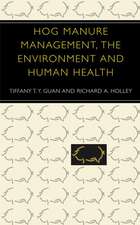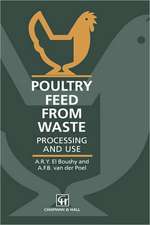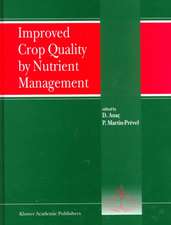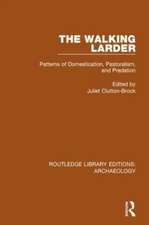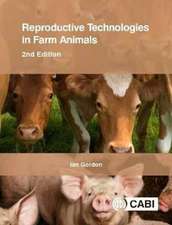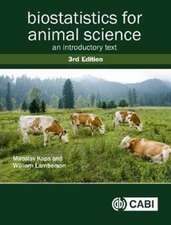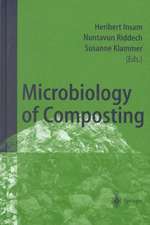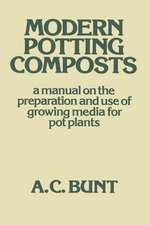Halophytes as a resource for livestock and for rehabilitation of degraded lands: Tasks for Vegetation Science, cartea 32
Editat de V. Squires, A.T. Ayouben Limba Engleză Hardback – 30 sep 1994
| Toate formatele și edițiile | Preț | Express |
|---|---|---|
| Paperback (1) | 1051.09 lei 38-44 zile | |
| SPRINGER NETHERLANDS – 13 oct 2012 | 1051.09 lei 38-44 zile | |
| Hardback (1) | 1230.03 lei 43-57 zile | |
| SPRINGER NETHERLANDS – 30 sep 1994 | 1230.03 lei 43-57 zile |
Din seria Tasks for Vegetation Science
-
 Preț: 34.59 lei
Preț: 34.59 lei - 18%
 Preț: 1219.16 lei
Preț: 1219.16 lei - 20%
 Preț: 554.66 lei
Preț: 554.66 lei -
 Preț: 394.12 lei
Preț: 394.12 lei -
 Preț: 396.02 lei
Preț: 396.02 lei -
 Preț: 402.76 lei
Preț: 402.76 lei - 24%
 Preț: 790.13 lei
Preț: 790.13 lei - 18%
 Preț: 1825.75 lei
Preț: 1825.75 lei - 18%
 Preț: 1218.69 lei
Preț: 1218.69 lei - 24%
 Preț: 784.53 lei
Preț: 784.53 lei - 18%
 Preț: 1233.69 lei
Preț: 1233.69 lei -
 Preț: 73.90 lei
Preț: 73.90 lei - 18%
 Preț: 1222.01 lei
Preț: 1222.01 lei - 18%
 Preț: 952.09 lei
Preț: 952.09 lei - 18%
 Preț: 1225.94 lei
Preț: 1225.94 lei -
 Preț: 388.31 lei
Preț: 388.31 lei -
 Preț: 391.40 lei
Preț: 391.40 lei - 18%
 Preț: 1220.45 lei
Preț: 1220.45 lei - 18%
 Preț: 949.23 lei
Preț: 949.23 lei - 18%
 Preț: 943.73 lei
Preț: 943.73 lei - 18%
 Preț: 1238.11 lei
Preț: 1238.11 lei - 18%
 Preț: 1232.26 lei
Preț: 1232.26 lei - 24%
 Preț: 796.72 lei
Preț: 796.72 lei - 24%
 Preț: 1068.94 lei
Preț: 1068.94 lei -
 Preț: 368.39 lei
Preț: 368.39 lei - 24%
 Preț: 783.41 lei
Preț: 783.41 lei - 18%
 Preț: 948.16 lei
Preț: 948.16 lei - 18%
 Preț: 948.61 lei
Preț: 948.61 lei - 24%
 Preț: 1053.39 lei
Preț: 1053.39 lei
Preț: 1230.03 lei
Preț vechi: 1500.04 lei
-18% Nou
Puncte Express: 1845
Preț estimativ în valută:
235.36€ • 246.40$ • 194.75£
235.36€ • 246.40$ • 194.75£
Carte tipărită la comandă
Livrare economică 07-21 aprilie
Preluare comenzi: 021 569.72.76
Specificații
ISBN-13: 9780792326649
ISBN-10: 0792326644
Pagini: 318
Ilustrații: XIV, 318 p.
Dimensiuni: 210 x 279 x 19 mm
Greutate: 0.8 kg
Ediția:1994
Editura: SPRINGER NETHERLANDS
Colecția Springer
Seria Tasks for Vegetation Science
Locul publicării:Dordrecht, Netherlands
ISBN-10: 0792326644
Pagini: 318
Ilustrații: XIV, 318 p.
Dimensiuni: 210 x 279 x 19 mm
Greutate: 0.8 kg
Ediția:1994
Editura: SPRINGER NETHERLANDS
Colecția Springer
Seria Tasks for Vegetation Science
Locul publicării:Dordrecht, Netherlands
Public țintă
ResearchCuprins
1. Overview of problems and prospects for utilizing halophytes as a resource for livestock and for rehabilitation of degraded lands.- 2. Global distribution and potential for halophytes.- 3. Silt affected soils as the ecosystem for halophytes.- 4. Use of halophyte forages for rehabilitation of degraded lands.- 5. Utilization of halophytic plants for fodder production with brackish water in subtropic deserts.- 6. Utilization of halophytes by livestock on rangelands: Problems and prospects.- 7. F[alophytes in mixed feeds for livestock.- 8. Halophytic shrubs in semi-arid regions of Australia: Value for grazing and landstabilization.- 9. Halophytes and halophytic plant communities in Inner-Asia.- 10. Forage halophytes and salt-tolerant fodder crops in the Mediterranean Basin.- 11. Halophytes and halophytic plant communities in the Arab region: Their potential as a rangeland resource.- 12. North American halophytes: Potential use in animal husbandry.- 13. Halophytes as a resource for livestock husbandry in South America.- 14. Halophytic coastal marsh vegetation in East Africa.- 15. Halophytes of the Indian desert-communities on the various `ranns’.- 16. Banni grasslands and halophytes: A case study from India.- 17. Potentials for cultivation of halophytic crops on saline wastelands and sandy deserts in Pakistan to overcome feed gap for grazing animals.- 18. Forage production from salt-affected and water-logged areas in Punjab, Pakistan: A case study.- 19. Prospects for saltbush (Atriplex spp.) as animal feed in irrigated and marginal lands in Sudan.- 20. Halophytes and desertification control in Iraq.- 21. Feed value of some halophytic range plants of arid regions of Iran.- 22. Use of edible shrubs in pasture improvement under Mediterranean environment innorthern Syria.-23. The potential economic use of halophytes for agricultural development of southernMorocco.- 24. Production from grazing sheep on revegetated saltland in Western Australia.- 25. Impacts of halophytes on animal health and nutrition.- 26. Small ruminant feeding trials on the Arabian peninsula with Salicornia bigelovii Torr..- 27. Effect of feeding A triplex amnicola on growth and carcass quality of dwarf goats.- 28. Halophytes as animal feeds in the Egyptian deserts.- 29. A lhagi sparsifolia Schap.: A potentially utilizable forage in saline soil.- 30. Massive propagation of halophytes (Distichlis spicata and Tamarix spp.) on the highly saline-alkaline soils in the ex-Lake Texcoco, Mexico.- 31. Vetiver grass, its potential in the stabilisation and rehabilitation of degraded saline land.- 32. Some features of salt tolerance in Senna (Cassia acutifolia), in Sudan.- 33. Characterization of progeny clones belonging to natural Sicilian Atriplex halimuspopulations.- Key words index.- Authr Index.


